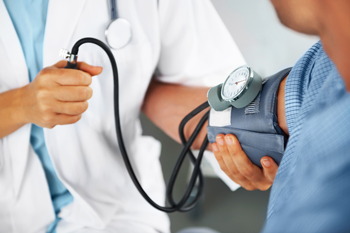Perfusion

Good perfusion starts in the heart. We use a formula called the cardiac output, which is heart rate (per minute) multiplied by stroke volume (force of heart squeeze). A good cardiac output is 4–8 liters per minute. Because it is difficult to measure this in the average person without sticking tubes in the body, we use blood pressure.
Minimum perfusion to organs can be assumed if our mean arterial pressure (MAP) is above 60 mmHg; normal MAP is 70–90 (approximately anything greater than 100/60).
There are other ways to measure perfusion, most with just a touch or a glance.
Sometimes just looking at the skin color, capillary refill (in the fingernails), the color of skin around the lips, or even how alert someone is, can give you an idea that the perfusion is good, or not so good.